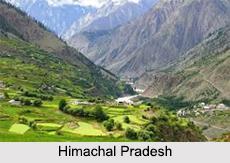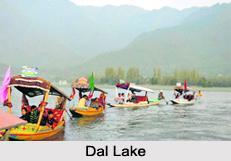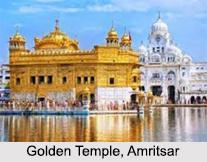IndulgeinNorthIndianStates'ExquisiteDelights:Food,Festivals, andFun!


North Indian States: A Rich Tapestry of History, Culture, and Natural Splendor SEO Title: Explore the Vibrant North Indian States: A Journey Through History, Culture, and Natural Beauty Introduction: Tracing the Rich Heritage of North Indian States North Indian states are a tapestry woven with threads of rich history and diverse cultural traditions. These states, which originated from the land's ancient history,holdsignificant political and cultural importance. Originally mapped by the British East India Company in 1767, these regions have a legacy that dates back to the era of the Indus Valley Civilization. The geographical features that distinguish North India from the Tibetan Plateau are the Indo-Gangetic Plain and the majestic Great Himalayas. This region's social, cultural, linguistic,andreligiousunityhasplayedavitalroleinpromotingtourism and fostering industrial development in modern India. 1. History of North Indian States: A Mosaic of Empires and Dynasties ThenorthernpartofmodernIndiahaswitnessedthe rise and fall of numerous empires and dynasties that have left an indelible mark on its history. From the Mauryan Empire to the Indo-Greek Empire, Northern Satraps to the Gupta Empire, Harsha Empire to the Pala Empire, and from the Delhi Sultanate to the Mughal Empire, this region has been a historical center of power and influence. It has also witnessed the rule of the Sur, Sikh, Maratha Empire, and ultimately the British Empire. 2. Cultural Splendor: Unraveling the Tapestry of North Indian States North Indian states boast a vibrant and diverse cultural heritagethatfindsexpressioninvarious forms The region is home to a multitude of pilgrimage sites, encompassing Hindu,

Islamic, Sikh, and Buddhist traditions. Hindu pilgrimagessuchasHaridwar,CharDham, Mathura, Varanasi, Ayodhya, Pushkar, Allahabad, and Vaishno Devi attract millions of devotees each year Buddhist centers like SarnathandKushinagarholdgreatsignificance for followers of Buddhism. The Taj Mahal, an architectural marvel and Islamic monument, stands proudly as one of the Seven Wonders of the World. Additionally, Islamic pilgrimages includingDargahHazratbal,DargahofKhwajaMoin-ud-dinChishti, Dargah Hazrat Nizamuddin, and Piran Kaliyar Sharif draw devotees from far and wide. The Golden Temple, a revered Sikh pilgrimage site, is a UNESCO World Heritage site located in Punjab. 3. Language and Diversity: A Linguistic Melting Pot North Indian states are characterized by linguistic diversity, with Hindi, Urdu, Punjabi, Dogri, Kashmiri, and English serving as the official languages in different states and union territories. According to the Ministry of Culture, the NorthCultureZonewasestablished in Punjab's city of Patiala on March 23, 1985, excluding Delhi 4 Demography: A Tapestry of Ethnic and Social Groups The demography of North India is primarily composed of groups belonging to the Indo-Aryan ethno-linguistic branch. These include Rajputs, Brahmins, Banias, Rors, Jats, Gurjars, Yadavs, Kolis, Khatris, Dalits, and Kambojs, among others. The region is also home to various minor ethno-linguistic communities, such as Dravidian, Austroasiatic, and Tibeto-Burman groups, which span the entire Indian subcontinent. 5. Climate:ExploringtheSeasonalCharmsofNorthIndia
The northern states of India experience a wide range of climates, with the region encompassing the coldest parts of the country. The average daily high temperature reaches 32 degrees Celsius, andforseveralmonths,temperatureshoverabove25degrees Celsius, often rising as high as 40 degrees Celsius NorthIndiaexperienceswintersfrom October to March, characterized by pleasant to very cold weather, with temperatures ranging from a freezing -2 degrees Celsius to 14 degrees Celsius. 6. Flora and Fauna: A Biodiversity Hotspot The abundant natural resources and extensive forest coverinNorth Indian states support a diverse array of flora and fauna The region is home to various types of vegetation, including deciduous forests, temperate forests, tropical thorny forests, and evergreen forests. The wildlife in the northern zone includes iconic species such as elephants, snow leopards, Bengal tigers, Indian leopards, Asiatic stags, spotted deer, red deer, hog deer, Indian gazelles, blackbucks, Nilgai, porcupines, wild boars, Tibetan sand foxes, Indian foxes, rhesus monkeys, langurs, and jungle cats. The region also attracts a wide variety of indigenous and migratory bird species. 7. Tourism: A Kaleidoscope of Experiences
The northern states of India offer a captivating tapestry of cultural, natural, and adventure tourism opportunities. From the sacred city of Haridwar to the ancientcityofAyodhya,fromthevibrantstreetsofMathuratothehistoricalcityof Allahabad, and from the serene town of Pushkar to the Buddhist pilgrimage centers of
Sarnath and Kushinagar, North India has something to offer every traveler. The Sikh Golden Temple, a symbol of spiritual solace, and UNESCOWorldHeritagesiteslikethe Nanda Devi Biosphere Reserve, Rajasthan's forts, Jantar Mantar in Jaipur, Qutb Minar, Red Fort, Agra Fort, Fatehpur Sikri, and the iconic Taj Mahal are among the region's major tourist attractions. Conclusion: Embrace the Essence of North India The northern states of India, encompassing the Indus-Gangetic Plain, Thar Desert, and the majestic Himalayan Mountain Range, are a treasure troveofhistory,culture,andnaturalsplendor. With a rich tapestry of empires, diverse cultural traditions, linguistic diversity, and a wealth of floraandfauna,thisregionoffersamesmerizingblendofexperiencesforevery traveler Whether exploring the vibrant streets of Punjab, immersing oneself in the cultural delights of Haryana, or embarking on a spiritual journeythroughtheHimalayas, North India beckons with itsuniquecharmandunparalleledbeauty.Embarkonajourney tothisenchantinglandandunlockthesecretsofitsgloriouspastandvibrantpresent
Clickonthelinkbelowtolearnmore
https://www.indianetzone.com/78/north indian states.htm

